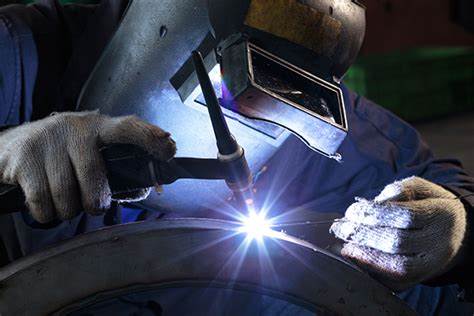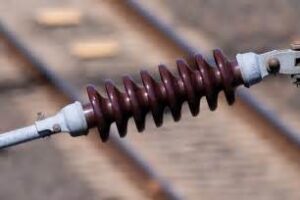Must-Known Welding Interview Questions & Answers
Table of Contents
Must-Known Welding Interview Questions & Answers
Some welding machines brands are: ESAB, L&T EWAC, JASIC, etc.
1. What motivated you to become a welder?
Answer: I have always been fascinated by metalwork and the process of joining materials to create something strong and functional. Welding, with its precision and craftsmanship, appealed to me as a way to turn raw materials into valuable products.
2. Can you explain the basic types of welding processes?
Answer: There are several welding processes, including MIG (Metal Inert Gas), TIG (Tungsten Inert Gas), Stick welding (SMAW), and Flux-Cored Arc Welding (FCAW). Each process has its own advantages and is suitable for different applications.
3. What safety precautions should be taken during welding?
Answer: Safety is paramount in welding. Proper personal protective equipment (PPE) such as welding helmet, gloves, and flame-resistant clothing should be worn. Adequate ventilation is crucial, and one should be aware of potential hazards like fumes and sparks.
4. How do you interpret welding symbols?
Answer: Welding symbols are essential for communication in welding. They indicate the type of weld, its size, and other details. I have been trained to read and interpret welding symbols according to industry standards.
5. What is the purpose of preheating before welding?
Answer: Preheating is done to reduce the risk of cracking in the weld and to improve the weld’s overall quality. It helps in minimizing the temperature difference between the base metal and the weld metal.
Must-Known Welding Interview Questions & Answers
6. How do you prevent distortion in welded components?
Answer: Distortion can be controlled by using proper welding techniques, like welding in a balanced sequence, minimizing heat input, and using fixtures to hold the components in place during welding.
7. What is the difference between MIG and TIG welding?
Answer: MIG welding uses a consumable wire electrode and a shielding gas, while TIG welding uses a non-consumable tungsten electrode and a separate filler material if needed. TIG welding provides more control over the welding process.
8. What is the purpose of a welding electrode?
Answer: A welding electrode is a coated metal wire that conducts an electric current to the workpiece, creating an arc. The coating provides additional protection to the weld from atmospheric contamination and stabilizes the arc.
9. How do you handle welding defects?
Answer: Detecting and addressing defects is crucial. I would thoroughly inspect the weld, identify the defect, and either repair or redo the weld as necessary. Preventive measures, like adjusting welding parameters, can also be implemented.
Must-Known Welding Interview Questions & Answers
10. What is the importance of weld quality documentation?
Answer: Proper documentation ensures traceability and quality control. It includes details about welding procedures, inspection reports, and any deviations from standard practices. This documentation is essential for compliance and continuous improvement.
11. Describe a challenging welding project you’ve worked on and how you overcame difficulties.
Answer: I once worked on a project with complex joint configurations. I addressed the challenges by carefully planning the welding sequence, adjusting parameters, and seeking guidance from experienced colleagues. The project was successfully completed with high-quality welds.
12. How do you stay updated on the latest welding technologies and techniques?
Answer: I actively participate in workshops, attend industry seminars, and read relevant publications. Additionally, I stay connected with online forums and communities to exchange knowledge and experiences with other professionals.
13. What safety measures should be taken when working in confined spaces?
Answer: Working in confined spaces requires additional precautions. Adequate ventilation, proper monitoring for hazardous gases, and a rescue plan are crucial. I am trained in confined space entry procedures and follow all safety protocols.
14. Explain the importance of maintaining welding equipment.
Answer: Regular maintenance ensures the reliability and efficiency of welding equipment. This includes checking and calibrating machines, inspecting cables and connections, and promptly addressing any issues. Well-maintained equipment contributes to consistent and high-quality welds.
Must-Known Welding Interview Questions & Answers
15. How do you ensure proper weld penetration?
Answer: Achieving proper weld penetration involves selecting the right welding parameters, maintaining the correct angle and travel speed, and ensuring good fit-up between the materials being joined. Regular inspections and adjustments during welding help monitor penetration.
Must-Known Welding Interview Questions & Answers
16. What role does stress relieve play in welding?
Answer: Stress relieving is a post-weld heat treatment process that helps minimize residual stresses and improve the overall integrity of the weld. It is particularly important in projects where structural integrity is crucial.
17. How do you handle dissimilar metal welding?
Answer: Welding dissimilar metals requires careful consideration of their physical properties and compatibility. Proper filler materials and welding techniques, along with preheating if necessary, are employed to ensure a strong and durable weld.
Must-Known Welding Interview Questions & Answers
18. What are the potential hazards of welding, and how can they be mitigated?
Answer: Hazards include exposure to fumes, arc radiation, and electric shock. Mitigation involves using appropriate PPE, working in well-ventilated areas, and following safety guidelines. Regular safety training and awareness are also essential.
Must-Known Welding Interview Questions & Answers
19. How do you approach quality control in welding?
Answer: Quality control involves inspecting welds visually and, when necessary, using non-destructive testing methods. I follow established inspection procedures, document results, and work closely with quality assurance teams to ensure compliance with industry standards.
20. Where do you see yourself in your welding career five years from now?
Answer: In five years, I aspire to be a highly skilled and experienced welder, possibly specializing in a specific type of welding. I plan to continue my education and certifications to stay at the forefront of industry advancements and take on more challenging projects.




